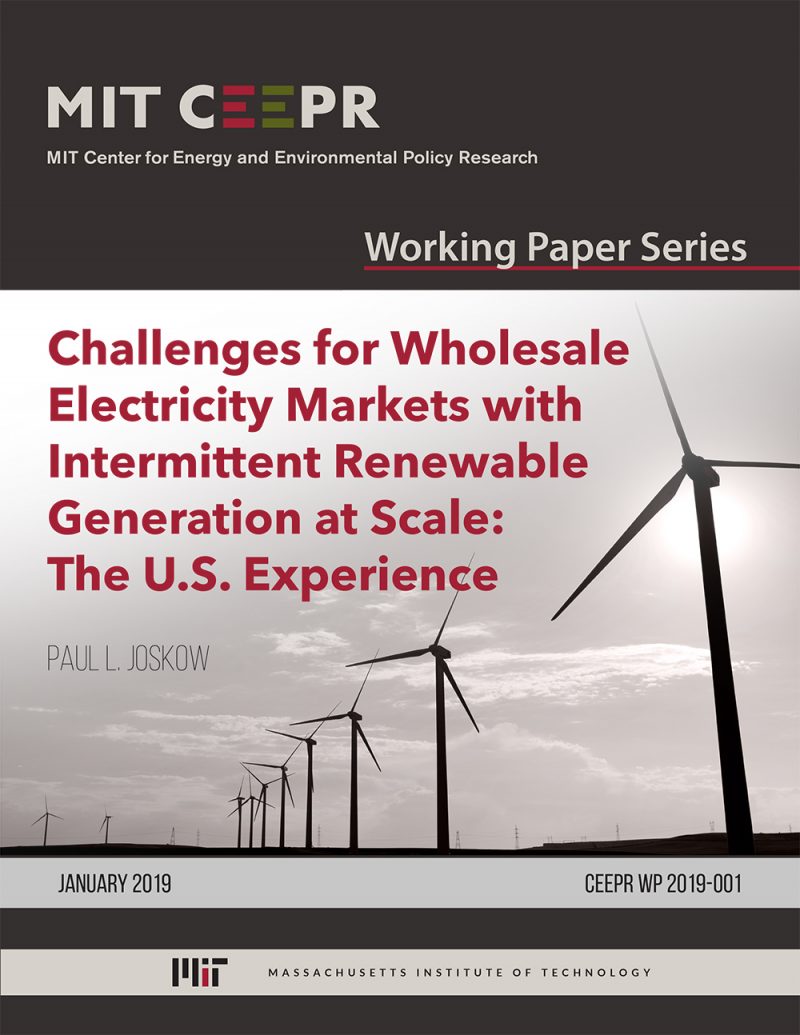Challenges for Wholesale Electricity Markets with Intermittent Renewable Generation at Scale: The U.S. Experience
Paul L. Joskow
January 2019
The supply of intermittent wind and solar generation with zero marginal operating cost is increasingly rapidly in the U.S. These changes are creating challenges for wholesale markets in two dimensions. Short term energy and ancillary services markets, built upon mid-20th century models of optimal pricing and investment, which now work reasonably well, must accommodate the supply variability and energy market price impacts associated with intermittent generation at scale. These developments raise more profound questions about whether the current market designs can be adapted to provide good long-term price signals to support investment in an efficient portfolio of generating capacity and storage consistent with public policy goals. The recent experience of the California ISO (CAISO) is used to illustrate the impact of intermittent generation on supply patterns, supply variability, and market-based energy prices. Reforms in capacity markets and scarcity pricing mechanisms are needed if policymakers seek to adapt the traditional wholesale market designs to accommodate intermittent generation at scale. However, if the rapid growth of integrated resource planning, subsidies for some technologies but not others, mandated long term contracts, and other expansions of state regulation continues, more fundamental changes are likely to be required in the institutions that determine generator and storage entry and exit decisions.
Keywords: electricity, renewable energy, intermittency, wholesale electricity markets
JEL classification: L51, L94, L98, Q41, Q48, Q55



